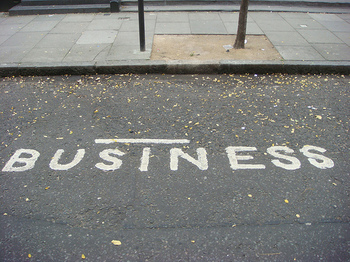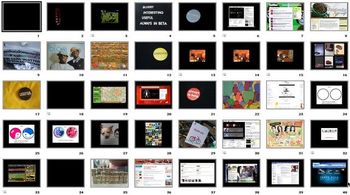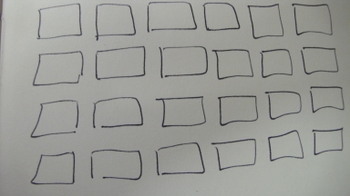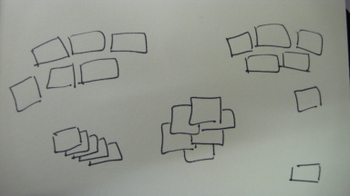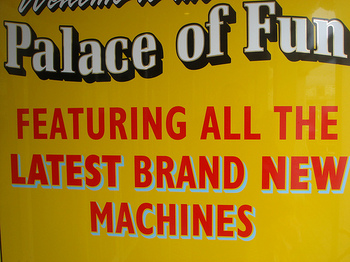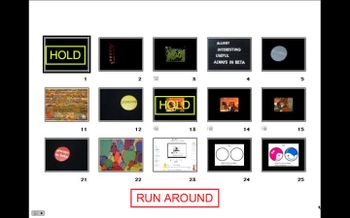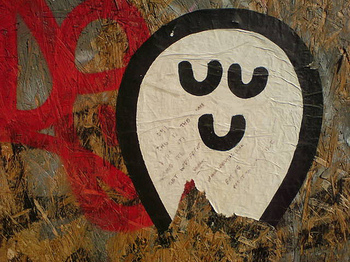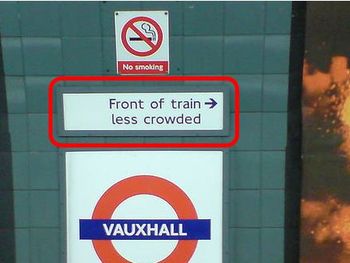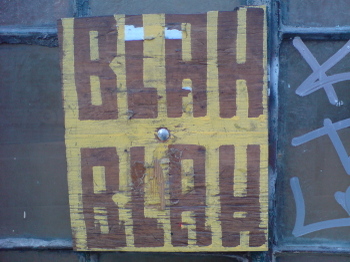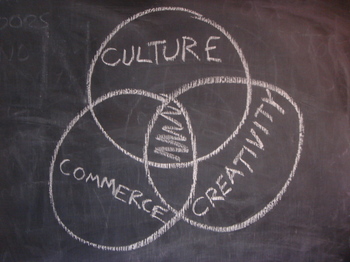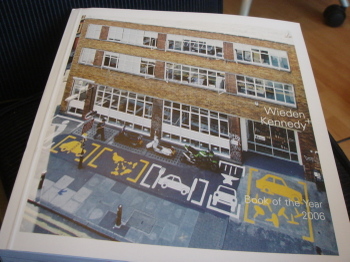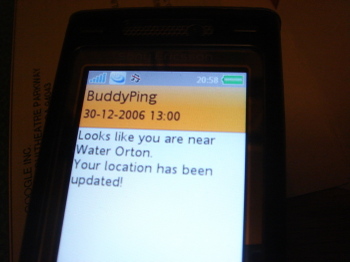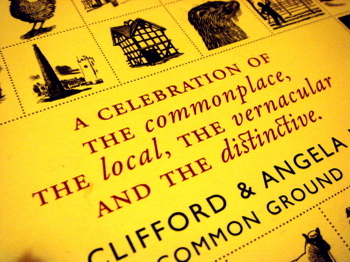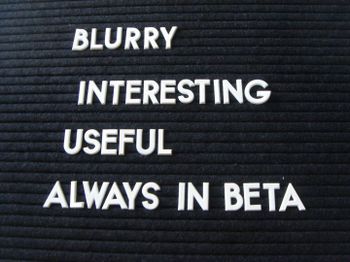
I did a presentation for a media owner last week and I thought I'd share a few charts etc. It wasn't a ton of new thinking, more of a restatement of some of the things I've been thinking about recently. And an attempt to share with them some of the things that advertisers are thinking about so they can prepare themselves. The summary would be: this is a difficult and blurry time for brands, media owners etc. They're used to living in a world of quite crisp lines but those lines are getting less clear. The best response, it seems to me, is to forget about the increasingly suspect goal of 'message delivery' and try and get more interesting, more useful or ideally, both. (Huge simplification I know). And I finished off by suggesting that brands could do well to learn from some of the behaviours that web 2.0 businesses exhibit, particuarly the idea of being 'always in beta'.

I don't think this is especially contentious. Lines are blurring everywhere. The line between customers and employees is blurring. The line between public and private is blurring.
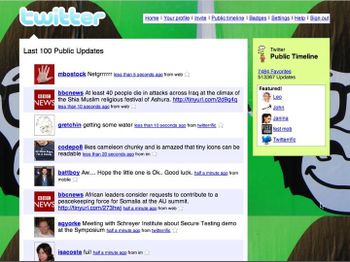
The lines between media types are blurring, and the lines around media authority. Here on the public twitter feed you can see that the BBC's 'at least 40 people die in attacks across Iraq' is nested neatly beside Gretchin's 'getting some water'. That equality of media status doesn't exist in all places, but it's starting to blur. And the line between those who have media power and those who don't is blurring.
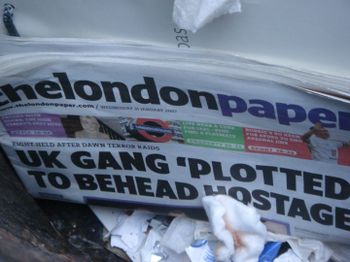
Allied to that is a blurring around what we're willing to pay for and what we expect for free, what we value and what we don't, and how we're willing to pay for things. Where do we want to see ads and where don't we?
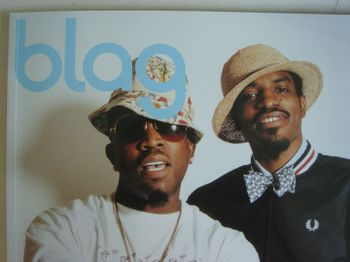
And a blurring of the lines between advertising/branding and editorial/content. It's happening in dead tree media and it's certainly happening online. That hard and fast line between the two is getting rubbed out, never mind blurred. Brands are realising they have the opportunity to bypass media-owners and talk directly to their customers.
This is therefore a time of fear and opportunity for brand owners. Some are excited by the blur, realising there's all sorts of stuff possible now, some are paralyzed by the contradictions and uncertainties of this blurry world. (see also Grant McCracken on cloudiness.)

A lot of brands are realising this means they have to get interesting. ie they have to create stuff that people actually want to engage with, stuff that people will want to watch over and above any other conveniently accessible choice. This means abandoning the usual reductionist, bash-them-over-the-head-with-a-simple-message approach because it's simply not financially effective to spend the kind of media money that will let you do that. Or even if it is now, it won't be soon. This means being willing to embrace negative emotion, being willing to tell people incomplete stories, being willing to give them room to think and realising that the most interesting communications are sometimes contradictory. I've talked about this a lot before so I won't bang on about it again here. But I learned my lesson on this when we did the Honda work.
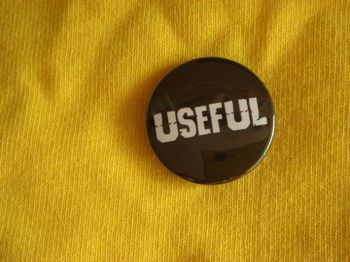
And then the other thing brands are starting to think about is: can we spend what would once have been marketing/advertising money on things that promote and enchance the brand by being useful to people? As in Branded Utility. This has obviously always been a good idea, but it's more necessary then ever now, and it's more possible than ever. The low cost of making digital stuff means brands can offer all sorts of gifts and services to their customers that enhance the brand, improve the product/service and provide new news to people. This is another well-discussed area. So, again, I won't bang on about it too much.
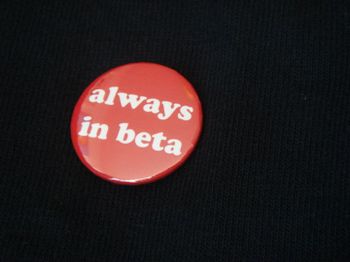
This final bit is probably a bit less formed in my head, but I think there's something here. Many web2.0 businesses talk about the idea of being 'always in beta' and I think it's a good way for brands to think too, because it might help them develop some of the habits they'll need to operate in a blurry, unpredictable world. I'm not suggesting that there's necessarily a literal parallel and that every brand in the world needs to start treating 'the web as a platform'. But I think there are some interesting characteristics worth noticing:
1. A constant stream of ideas, bundled together by a common brand/business purpose.
(Can you bundle a stream? Probably not, but you know what I mean.) The business environment these brands live in mean they can't simply do a big idea. They have to keep innovating in order to stay relevant and interesting. The old software model of a big upgrade every couple of years is being replaced by a stream of little enhancements and fixes. I suspect the same will soon be true for brands. The old model of a big launch of a big idea followed by cut-downs of said big idea to deliver mind-numbing levels of repetition simply won't survive contact with the contemporary media landscape. And a key characteristic of a brand that's likely to survive the modern world will be creative fecundity, the ability to just keep having new ideas and to keep putting them out in the world. My favourite example of this is the way Ze Frank keeps generating new stuff, and, especially, the philosophy he espouses here.
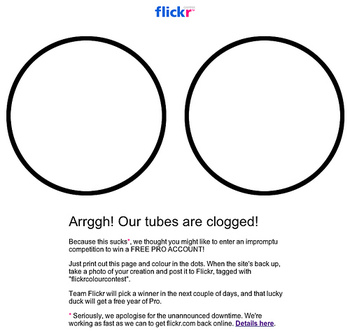
One of the other interesting characteristics about always being in beta is accepting that mistakes are going to happen. And preparing for them. And thinking about, maybe, trying to turn them into opportunities. Flickr's attempt to turn a 'we're down' message into fun probably annoyed some people but I liked it are clearly so did lots of other people. When you're moving at the speed that the modern world demands mistakes are inevitable. Being surprised by them shouldn't be. Mistakes are also when the veneer tends to slip, if there is a veneer. The authentic voice of a brand or organisation is exposed when something goes wrong, if it's not the same as the voice you normally speak with people will notice.
3. Building with your community
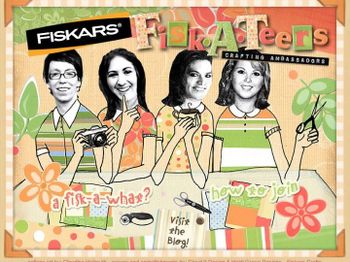
I guess a key idea behind web2.0 is that it's the community of users that provide the value. And that's increasingly true for brands. I don't think anyone would argue with that. My favourite examples are the Fiskateers and the Air Force One.
And that's it. As I say not a lot of new stuff, but I just thought I'd share. And I have some spare badges if anyone would like one.
